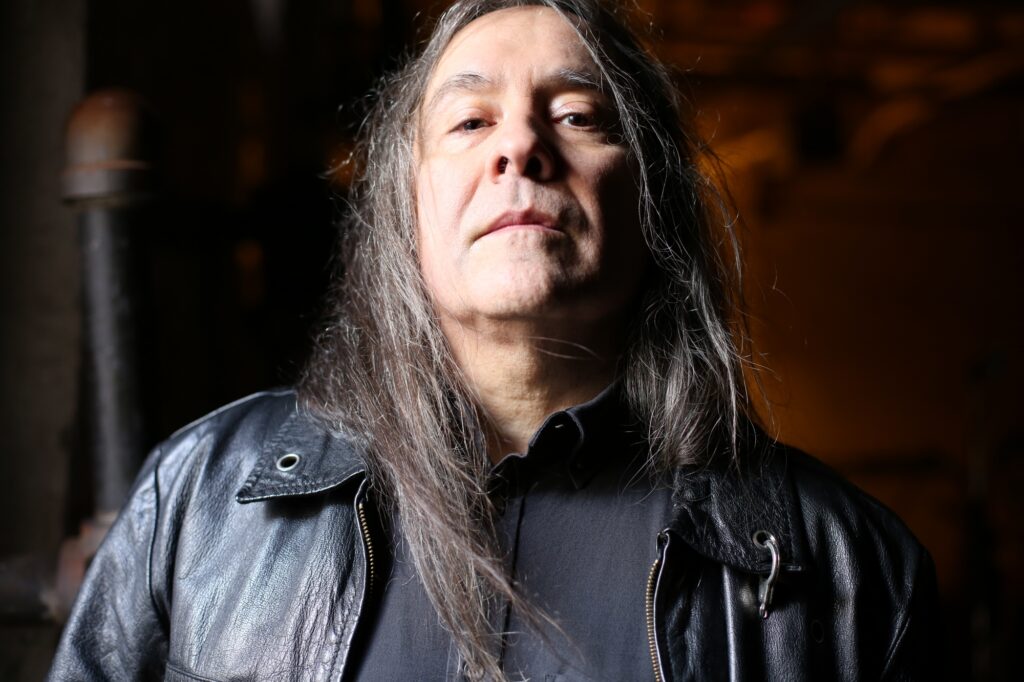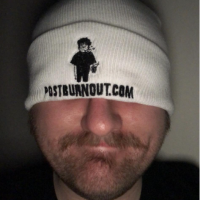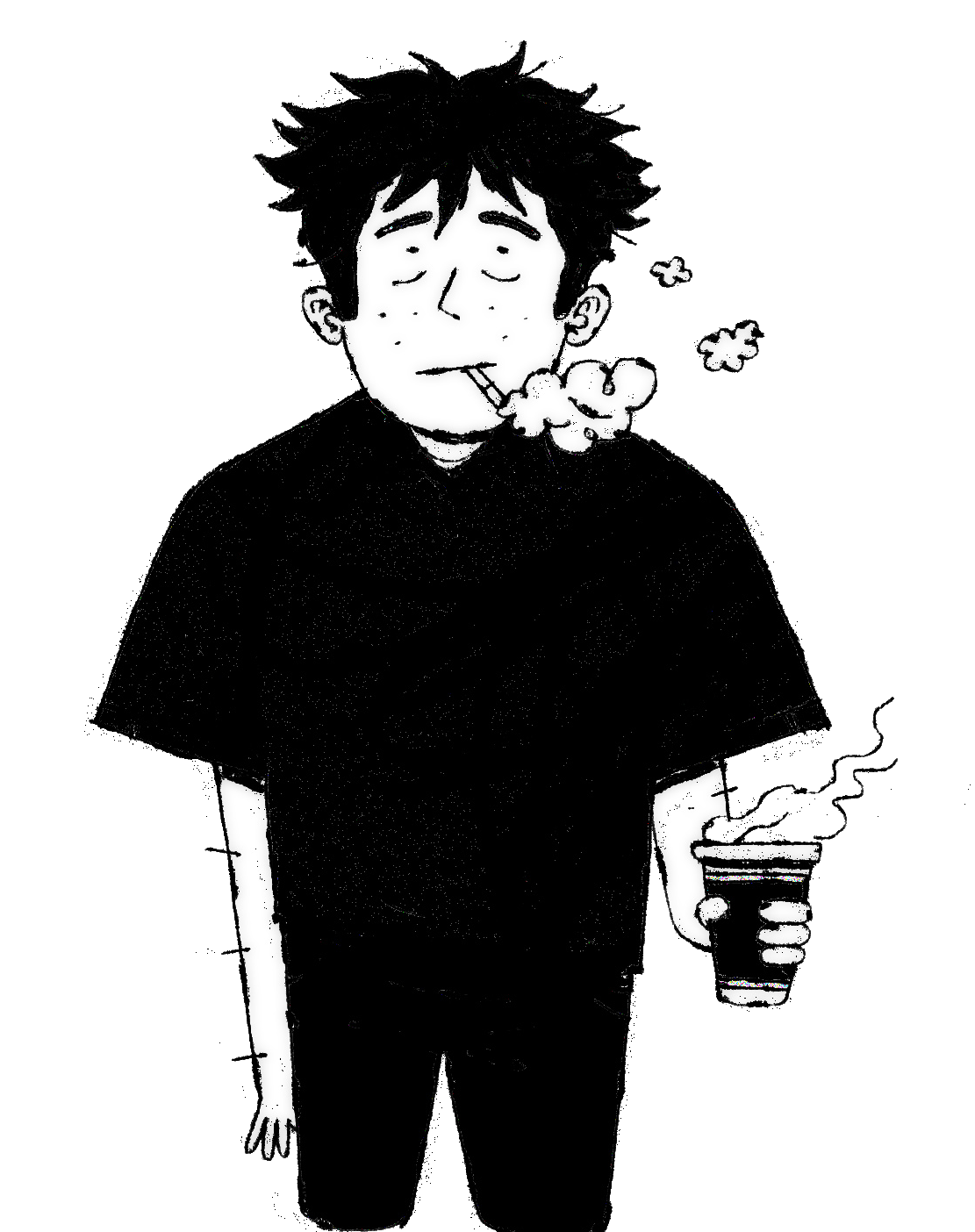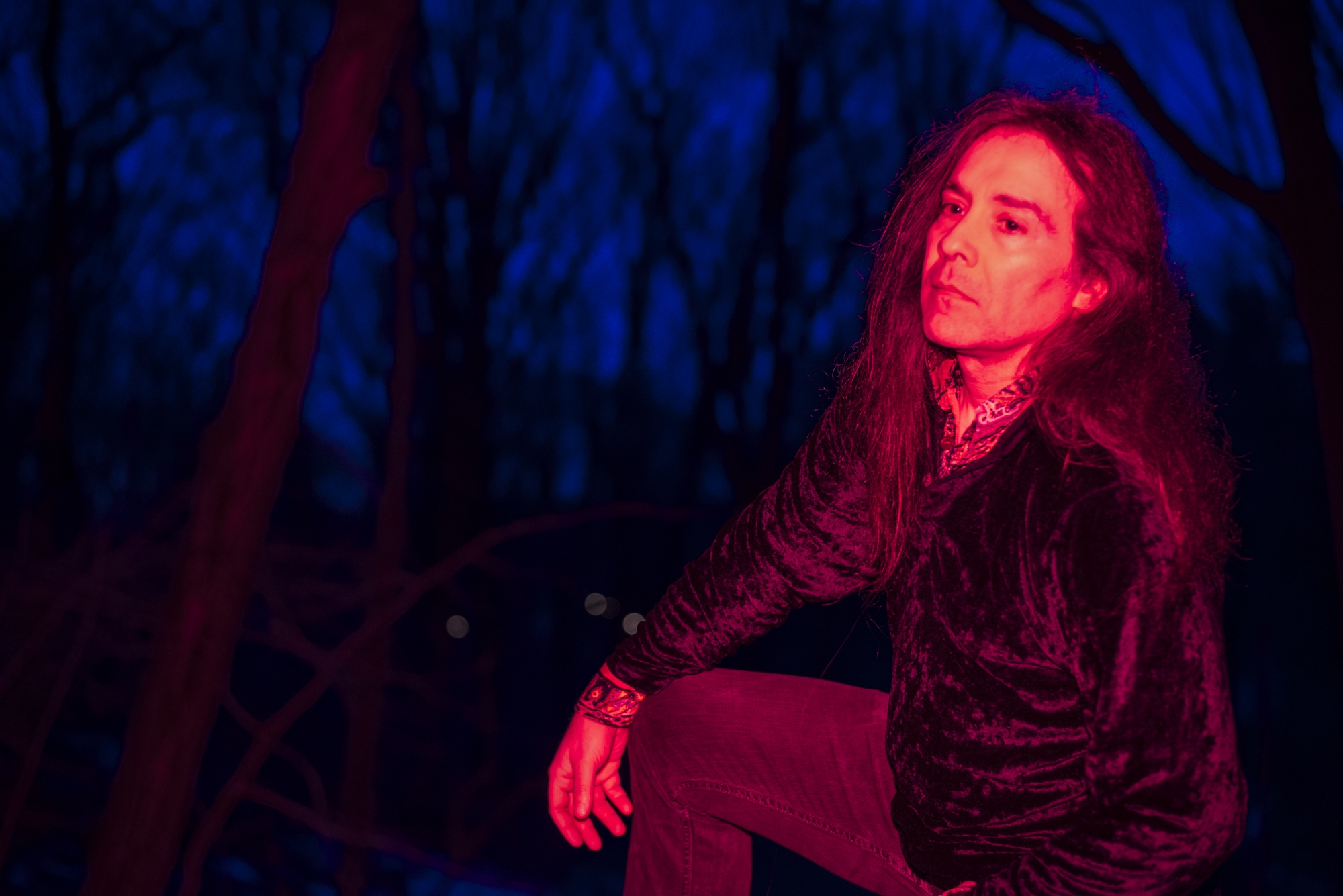With two parents who were classical pianists, the Manhattan-born-and-raised Martin Bisi rejected the classical music and orchestras that he was raised on, for political reasons as much as musical predilections.
“I’m really against rich people’s music,” Martin says when talking with Post-Burnout. “There’s a lot of good music out there, so I’m perfectly happy, personally, jettisoning… – talk about…it’s almost my little bit of cancel culture – where I’m comfortable just cancelling the stuff that’s made for millionaires by millionaires, that’s old and that […] reeks of royalty and the royal patrons of the Enlightenment. It’s hard for me, in the same way that I’m not inspired to listen to Kanye, it’s just the music that’s handed top-down from our rulers. I’m kind of uninspired [by it].”
Yet Martin doesn’t deny that some of his family’s musical lineage may have seeped in subconsciously. “I realise that there’s a weird irony, which I question even myself,” he says. “Like, for instance, on my previous record, Feral Myths, I had freakin’ opera on there. There’s this woman, Amanda White, […] she doesn’t think she’s so great, I don’t know why, but I think she’s a phenomenal soprano voice.
“She can just reach some high notes with intensity and stuff, and that’s crucial for me in some of my writing, where I can’t hit those notes, and she hits them strongly with the vibrato and whatever. So, I have opera on a couple of records.”
However, as a teenager in 1970s New York, Martin was drawn to the art and avant-garde music scenes happening across the city. In ’78, he joined an experimental musical project with a series of future record producers Bill Laswell, Michael Beinhorn, and Fred Maher, called Material, which began life as a band before transitioning into a collective of producers, whose most famous work would be Herbie Hancock’s 1983 Grammy Award-winning funk track “Rockit.”
“It’s actually pretty stunning,” says Martin when reflecting on Material. “When I was in high school, my last year of high school, my roommate was one year older than me. That was Michael Beinhorn. So, Michael Beinhorn, went on to… – well, he became part of Material – so, he worked on ‘Rockit.’ So, that was my high school roommate. And he went on to produce stuff like Joan Jett, and Soundgarden, Korn, even.
“And it was him, he’s the one who met Laswell, and then, like two weeks later, said, ‘Oh, you’ve got to meet my new friend’ – we’re, like, teenagers – he said, ‘You’ve got to meet this guy Bill, who just moved here from Detroit, and he’s really cool, maybe we could do stuff with him.’ So, then he brought me in to see Bill and to meet Bill, so we were this little coterie of kids.
“So, somehow, I guess enabled by Bill, really, because he was older and he was on this path…he came to New York meaning business. This guy came to New York meaning to…Same as [Brian] Eno, all these people drawn to New York at the time to get busy and stuff. But then, our other friend – who was, like, fourteen at the time – was Fred Maher, who then ended up working with Lou Reed and I think produced some Lou Reed records, and he ended up in Material, too. So, we had this underaged drummer in Material for a little while. So, it’s so funny that of us three, for instance, we all ended up in production in some way. So, it’s like…I don’t even know, weird coincidences or paths connect. I don’t know.”
As Martin mentioned, at this time Brian Eno was in New York. Eno was a former member of the British art-pop group Roxy Music, and by the late ‘70s was better known for his solo career, comprised mainly of experimental instrumentations and soundscapes, and his production work. At this time, Eno was working as a producer for the likes of David Bowie, U2, Talking Heads, Devo, and Toto.
One night, Eno – who was taking an interest in New York’s burgeoning no wave movement – was roaming some of the city’s clubs to get a sense of the scene and caught Martin working the soundboard at a gig. The two struck up a conversation, and Eno invited Martin to work with him on some tracks that he was producing.
“With Eno, now in retrospect, when I see his trajectory, I think that his time in New York City was something that’s not very heralded or very much talked about,” says Martin. “Which is his time that pretty much started with the record No New York, which is 1977 [Editor’s Note: The compilation was recorded and released in 1978. Sorry to be a pedant; I seemingly can’t help myself], which had some of the classic no wave bands on it. So, that was at the beginning of his time in New York, and his time in New York shortly ended after the recording with me.
“So, that period – when you’re talking about a golden era in New York – that’s when these people came to New York, and it was an incubator, and he talks about this, it was like an incubator of ideas and stuff, and a crossroads. But, yeah, in retrospect, I’m proud of the Eno thing, also because it was very much not like me.”
The record that Martin was referring to is Eno’s 1982 album, Ambient 4: On Land. That album was the first music to be recorded at OAO Studio, which was founded in 1981 by Martin and Laswell, with the aid of some financial backing by Eno. The studio was built in the then-unhip borough of Brooklyn, in the underdeveloped neighbourhood of Gowanus. The following year, in ’82, the studio would be rechristened to BC Studio, which it has been referred to ever since.

Courtesy of Discipline PR
Over the years, BC Studio has played host to many fledgling and established acts looking to record, and the members of Material have recorded and produced most of them. Some of Martin’s contributions as a producer, engineer and/or mixer (beyond his work with Eno and Hancock) there include Sonic Youth’s Bad Moon Rising and EVOL albums and “Death Valley ‘69” single, almost all of Swans’ records that were released in the ‘90s, Iggy Pop’s Instinct, Ramones’ Brain Drain, White Zombie’s Make Them Die Slowly, the remix of EMF’s “I Believe” single, The Dresden Dolls’ self-titled debut album, and many more.
When asked how he decided which artists to work with, Martin went on to talk about how the members of Material – who have all had successful careers – had such differences and variations in their clientele.
Martin says, “The great experience, for me, is to work with a band or an artist that has, you know, maybe a little bit of a following – you know, maybe a little something going on, they’re kind of bubbling under a little bit, you know. They’re kind of popular, vocally, you know. They have a little something going on – and then do a record and then have them kind of blow up.
“So, that’s clearly what happened with Dresden Dolls. I think even, to some extent, with Sonic Youth, but definitely with Dresden Dolls. So, that was a phenomenal experience. So, as a producer – unlike Bill Laswell, who’s my collaborator – his dream… – so, that’s my dream: If, which is seldom, but if that can happen, basically going from grassroots to something that affects a lot of people, that’s my dream. That’s the best dream, right? – for Laswell, his dream was always to work [with] and rehabilitate, somewhat, some of his heroes of the past.
“So, he was more into the tarnished or whatever legends. So, you could take […] Herbie Hancock, that was clear. Doing a record with Ginger Baker. Even the PiL stuff with John Lydon or whatever. That was not the Sex Pistols, it was after, so I think Lydon was sort of, ‘OK, well now what?’ So, Laswell would step in and…so that PiL record kind of helped. So, that’s Laswell’s dream, and it’s funny because we were very much at odds with that.
“[…] [Laswell] was like up, up, up the ladder and working with these big names. In fact, that’s what happened with Hancock. […] But the thing that really got me excited was finding bands like Live Skulls or whatever, working with their records […] because it’s so much more of an interesting jump, to go from complete obscurity to something that’s open and in the air. Like, that’s a dramatic jump and change in fortune, and that’s inspiring, versus taking a faded legend and just making something slightly better or kind of put them in a new context.”
Over the past forty-plus years that BC has been in operation, the borough of Brooklyn has evolved from what it was in 1981 into a cultural hub of the city, in great part thanks to the notoriety of the Williamsburg neighbourhood. The hipster intrigue born from this new reputation has brought with it gentrification, a rise in the cost of living and rent, and a brain drain as many young people cannot afford to live in the once-decollate part of the city.
Martin has documented this change in New York on his new sardonically-titled EP, Your Ultimate Urban Fantasy, which was released today. “With all my records, I really hone in with the concept when it’s almost done,” says Martin. On this EP, he says, “Strangely enough, every song was about a place.”
As an example, a component that connected the songs of the EP was the New York City Subway. Comparing the city of the ‘70s to what it is now, Martin says, “It was definitely a more feral New York. Some would say that it’s so much better now, right? That sort of ties in a little bit with the ironies of Your Ultimate Urban Fantasy.
“In that song, ‘Manhattan Local Train,’ even back then, I thought that that was an important part of New York City, was in the subway, people really rubbed elbows, rubbed shoulders. These are your fellows, and it seemed to equalise class, at least for one ride. [Laughs] At least for the fifty-minute ride downtown, you would be sharing seats with people from the South Bronx, which was the poorest part of New York City at that time, right through the richest parts of New York City.
“You know, New York City has never been very car-friendly; you would take the train. So, everyone took the train. Even our mayor a little after this time – Mayor Bloomberg, the billionaire – he would make it a big deal and he would take that train. He would take the subway from his mansion on the Upper East Side, take that same train I’m talking about.”
Inspired by krautrock (specifically Kraftwerk), the EP takes on a more urbanised soundscape when compared to Martin’s familiar earthy and ethereal work. “I was a little sensitive to this sort of prosaic concept here,” he admits. “You know, ‘We’re going to do a song about train stations.’ Something about that was very different to my previous material, which was supposed to be very cathartic and have an emotional quality and be immersive. […] It seemed like such a mundane concept, and I felt sensitive to that.”
Beyond New York, the EP takes inspiration from Germany, where Martin and his band tour a lot. What helped Martin get comfortable with the concept was when he was at Köln Hauptbahnhof (or Cologne Central Station for those who don’t Deutsch sprechen), waiting to board a train. He happened to notice that the first day of the Rhineland Carnival had begun and locals were drinking and acting with a level of otherwise punished anarchy.
“What was interesting about that was, on those occasions – it’s almost like The Hunger Games or something – on those occasions, our society allows for complete mayhem,” says Martin. “So, they allow you to blow your fuse on a sort of controlled, designated day. A holiday where everyone can completely flip out, and that’s acceptable, but you can’t do that on any other day.”
He concludes, “So, the sonic influence on that was really just absolute mayhem, and then I started thinking about what we can do with that. And then I thought, ‘There’s so many dimensions here! There’s escalators, there’s this, there’s that.’ And then I started really pouring through all the dimensions and, for the first time in my life, really thinking about transit hubs. But you’ve got to get used to them; you’re going to be spending a lot of time in these things. That’s just the way it is, that’s the way it has been.”
Martin Bisi’s latest EP, Your Ultimate Urban Fantasy, is out today. You can stream or purchase a copy here. You can keep up with Martin’s work and social media accounts on his website.
Tune into today’s episode of POSTBURNOUT.COM Interviews… at 21:00 (IST) to hear this interview in full, where we expand on the topics discussed in this article, as well as discuss the woes of running a cultural space in a gentrified section of New York City, how Martin produces, his listening habits and who he’s listening to now, technology, the evolution of Brooklyn, musical revolutions, how the studio has survived after all of these years, the devaluation of music, and much more. Available on YouTube, Spotify, Apple Podcasts, and Amazon Music Podcasts.

Aaron Kavanagh is the Founder and Editor-in-Chief of Post-Burnout. His writing can also be found in the Irish Daily Star, Buzz.ie, Totally Dublin, The GOO, Headstuff, New Noise Magazine, XS Noize, DSCVRD and more.

 POST-BURNOUT
POST-BURNOUT